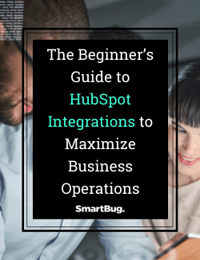
Data Hygiene Best Practices: Tips to Prep Your Database for a Successful Integration
October 13, 2023
In today's data-driven world, ensuring the accuracy and reliability of information is crucial for businesses to make informed decisions and drive growth. Whether you are merging databases, implementing a new system, or simply looking to improve the quality of your data, following a set of data hygiene best practices will help you optimize your database, enhance efficiency, and unlock your business’s true potential.
What Is Data Hygiene?
Data hygiene refers to the practice of ensuring the accuracy and quality—that is, the “cleanliness”—of data within a database or system. It involves implementing processes, procedures, and best practices to maintain data integrity, eliminate errors, and enhance the overall reliability of the data.
Data hygiene encompasses various activities such as data cleansing, deduplication, validation, standardization, and normalization. By following good practices for data hygiene, businesses can improve decision-making, enhance customer experiences, improve operational efficiency, and facilitate successful data integrations and analysis.
The Importance of Data Hygiene for Integration Success
Integrating systems or introducing new technologies into your organization's infrastructure can be a game changer, but it's crucial to lay the groundwork for a seamless transition. This is where data hygiene comes into play. By prioritizing data management, you can mitigate the risks of data inaccuracies, duplicates, and outdated information during integration projects, ensuring a smooth and efficient process.
Streamlining Operations and Optimizing Decision-Making
Data hygiene isn't just about cleanliness; it's about unlocking the full potential of your data. By ensuring your database is in tip-top shape before integration, you can streamline operations and optimize decision-making processes. Ensuring that data is accurate and clean empowers you to have a comprehensive view of your organization's information, enabling data-driven insights that lead to informed technology choices, improved operational efficiency, and enhanced strategic planning.
Data Security and Compliance Considerations
Data hygiene is critical not only for seamless integration but also for data security and compliance. Protecting sensitive information, mitigating cybersecurity risks, and complying with regulations are paramount. Implementing data hygiene best practices helps:
- Ensure data privacy
- Reduce the chances of data breaches
- Maintain compliance with relevant regulations
By prioritizing data hygiene, you can foster a culture of data security within your organization, safeguarding valuable information and building trust with customers and stakeholders.
Data Governance and Documentation
Maintaining proper data governance and documentation is crucial for compliance with data protection regulations. Your organization should have clear policies and procedures in place regarding data handling, access, and storage. This includes documenting data processing activities, conducting data protection impact assessments, and maintaining records of data breaches. Strong data governance practices can help your organization ensure transparency, accountability, and compliance with legal requirements.
Consent Management
Data hygiene practices should include proper consent management. Regulations such as GDPR require organizations to obtain explicit consent from individuals before collecting and processing their personal data. By implementing mechanisms to manage and document consent, such as consent forms or preference centers, your organization can demonstrate compliance with legal requirements and respect individual privacy rights.
Data Hygiene Best Practices for Your Team
Many organizations struggle with data hygiene, resulting in costly human errors, revenue-sapping inefficiencies, and missed opportunities. Without clean data, integrations become messy—if you’re able to pull them off at all. Let's dig into 10 best practices for helping your team maintain data hygiene and preparing your database for a seamless integration.
1. Define Integration Goals
Before taking any data hygiene steps, make sure integration goals are clearly defined.
Is your team merging databases from different systems? Is your team migrating to a new CRM platform? Understanding the purpose and scope of your team's integration will help you identify the specific data hygiene tasks your team needs to perform. It will also allow your team to set realistic expectations and allocate resources accordingly.
2. Conduct a Data Audit
A comprehensive data audit conducted early goes a long way toward ensuring data hygiene. This audit will help your team understand the current state of your organization's database and identify areas that require improvement. Have your team identify the data fields that are critical for your organization's integration and assess the quality and completeness of each field. Look for inconsistencies, duplicates, missing values, and outdated information.
3. Cleanse and Standardize Data
Cleaning and standardizing your organization's data helps maintain data hygiene by improving accuracy, enhancing data, and minimizing errors during integration. Your team may need to remove duplicate records, correct misspellings, and ensure consistent formatting across all data fields. Automated tools or data cleansing software can also streamline this process.
4. Validate Data Accuracy
To ensure data accuracy throughout the integration process, implement validation rules that check for data integrity and adherence to predefined criteria. For example, validate email addresses, phone numbers, and postal codes to ensure they are in the correct format.
5. Update and Enhance Data
Data integration presents an excellent opportunity to update and enhance your organization's existing data. Leverage external data sources to fill in missing information, such as email addresses or job titles. Consider appending additional data fields, such as social media profiles or purchase history, to enrich your customer database. By taking these steps and others, you will have a more comprehensive and valuable dataset for future analysis and decision-making.
6. Establish Data Governance Policies
Data governance is crucial for long-term data hygiene. Establish clear policies and procedures for data entry, validation, and maintenance. Define roles and responsibilities within your organization to ensure accountability. Regularly review and update these policies to adapt to changing business needs and evolving data regulations.
7. Back Up Your Data
Before embarking on any integration project, your team should create a backup of your organization's database. This step acts as a safety net in case anything goes wrong during the integration process—you can easily roll back to a previous state if necessary, thus preventing the loss of critical data.
8. Test, Test, Test
Create tests that cover various data scenarios and evaluate the outcomes. This process will help identify any flaws or issues in your integration setup before you deploy it with live data. Make sure to involve all stakeholders and incorporate their feedback into the testing phase.
9. Monitor Integration Performance
Once your organization's integration is complete, your team needs to monitor and track its performance. They should keep an eye on key metrics such as data accuracy, system response time, and user satisfaction. Regularly review your organization's integrated database for any anomalies or discrepancies.
10. Train Your Team
Amid these data hygiene best practices, training can often go overlooked. Ensure that team members who will be working with the integrated database understand how the integration works, how to access and use the data effectively, and how to handle any potential issues and poor data that may arise.
Data hygiene is essential for successful data integration—and so are the best practices that foster that success. By investing time and resources in cleaning, organizing, and maintaining a solid data hygiene process, you ensure that your integrated systems are built on a solid foundation of accuracy and reliability. If you need help setting up or building your next integration project, reach out to our experts. We look forward to chatting and discussing your needs!
About the author
Viole Morales Viole Morales is a passionate marketer from El Salvador. With over 9 years of experience in digital marketing, customer success, and account management, she enjoys learning new marketing trends, managing and cultivating good relationships with her clients, and enabling them to achieve their goals through digital marketing strategies. Read more articles by Viole Morales.
























